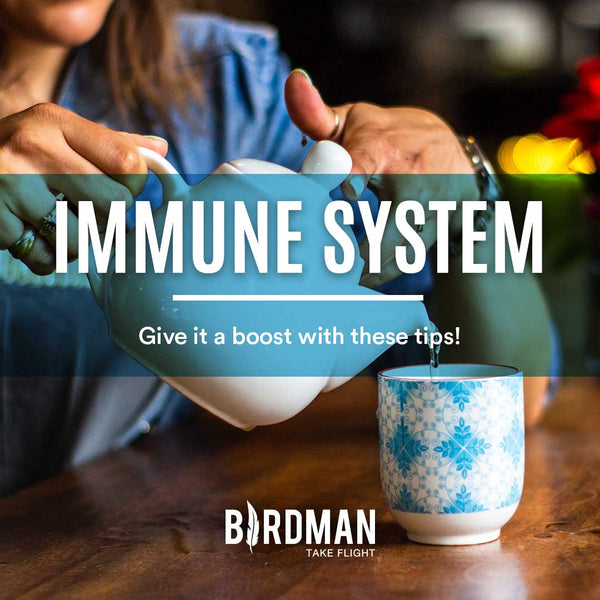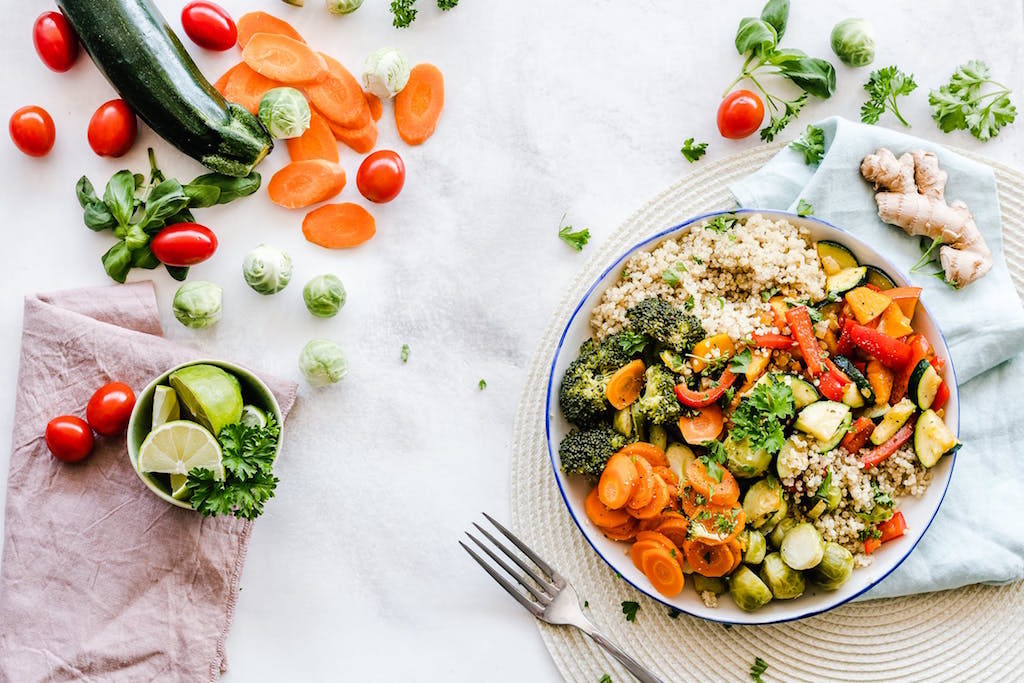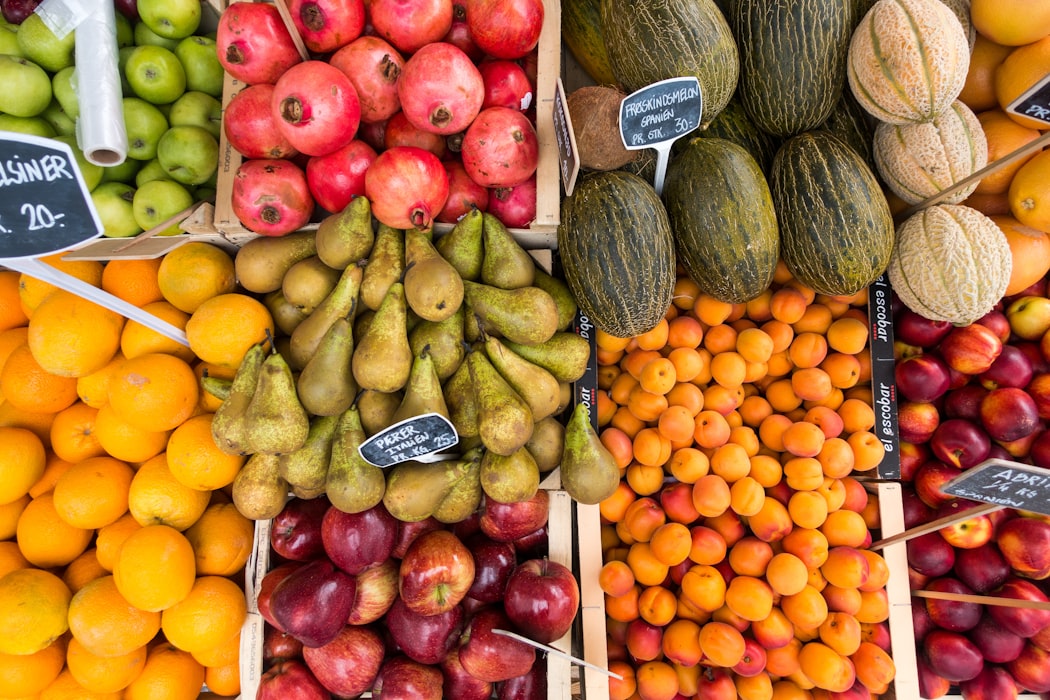
The Immune System and Epidemics
Epidemiological Outbreaks and the Immune System

Epidemiological outbreaks and humanity have existed together practically since the start of our existences. Throughout our story, we've had to witness from localized pests, to pandemics of massive extensions and catastrophic consequences.
Coronavirus (COVID-19) is not the first pandemic to strike humanity, and according to mathematical logic and historical evidence it will certainly not be the last. Despite this, according to scientific and historical evidence, humanity has always known how to adapt, evolve and has managed to prevail despite all these difficulties.
Both medicine and our diets are factors of great importance that have evolved and mutated over time, as much as the times require. Therefore, we have to be aware of these changes, know where we're starting from and where we're heading, as well as what decisions we are making now regarding our own body.
Let's say that our sick body is like a castle being besieged. We must have defense agents both outside and inside the castle; internal and external prevention are just as important.
So, it’s our responsibility to know what we are giving to our body now so it works properly and defends us from any attack on our health.
What can I do in order to protect myself?
In order to attack a dangerous agent like a virus, the immune system must have the necessary elements to resist, and proteins are an essential part of these elements. Proteins produced through metabolism are the "chaperone" proteins that help Heat Shock Proteins (which are activated during periods of stress, HSP) to activate macrophages and lymphocytes (1), which are the main agents of our immune system.
Food is the essential fuel for our existence, and not just to obtain pleasure from consuming it. From the first moment it reaches our insides, our body is responsible for breaking down such foods and carry both the nutrients and energy said food possesses, to where the body requires it. We need to supply our body with the proteins, vitamins, minerals, acids, fats, etc. it requires to be able to move, think, and of course, on order to have a resistant and optimal defense system against diseases.
Eating right, meeting all of or nutrients' daily requirements and maintaining a healthy lifestyle is the best way to help our bodies defend themselves.
Metabolism and the Immune System
It's known that the same agents that influence metabolism also affect the immune system (2). A metabolism in optimal conditions regulates energy levels correctly, ensures that our organs function properly and keeps the immune system alert. Although we don't study look at it with a scientific eye, we know that the foods we decide to consume help us to a greater or lesser extent to cope with diseases; for example, we know what to eat and what to take when we are sick to the stomach or with the flu because our parents or grandparents passed on to us that almost ancient knowledge acquired by our ancestors.
But it’s also a reality that many people don't have the knowledge or the simple habit of maintaining a healthy lifestyle that makes emergency home remedies completely unnecessary.
As we mentioned before, maintaining your immune system in perfect conditions and thus having good defenses implies a constant and prolonged effort and getting rid of harmful habits that constantly undermine any progress we could make.
Poor diet, sedentary lifestyle and obesity are risk factors, not only because they slow down metabolism and promote the appearance of cardiovascular diseases and type 2 diabetes, but because they also affect the response of the immune system (3), and the people who suffer these conditions are the main targets of contagion in an epidemic. However, malnutrition, smoking habits, alcoholism and nutrient deficiency for proper immune system function, as well as excess of them directly influence the immune system response as well (5), and people who suffer from them are also important targets of contagion.
Consumption of Animal Products and Epidemiological Risk
As is well known, consuming red and processed meats regularly raises cholesterol levels and increases the risk of cardiovascular disease, type 2 diabetes and colorectal cancer, which in turn increase the chances of epidemiological contagion, but that's not the only risk (9). Eating meat also increases the risk of contracting the Hepatitis E virus (11), and it has been shown that viruses that affect cattle are transmitted via infected meat and milk intended for human consumption and mass marketing (13).
Eating raw, half-cooked, smoked, dehydrated or pickled meats, fish, shellfish, crabs and mollusks also promotes the contraction of diseases caused by bacteria and parasites (10).
Furthermore, it has been found that a handful of viruses ranging from Gyrovirus (12) to H5N1 (avian flu) (14) and many other Influenza viruses can be transmitted through poultry meat.
Humans currently consume animal proteins and fats although they are not essential to our diets, for reasons ranging from habit to just taste, but it is important to know that the consumption of these products carries significant risks to our health (15), and that all the benefits that could be found in the consumption of products of animal origin can be easily found in a plant-based diet.
Which Plant-based Foods could Help Me Raise my Defenses?
Nutrients that are required for the immune system to function properly include essential amino acids, omega 6, vitamin A, folic acid, vitamin B6, vitamin B12, vitamin C, vitamin E, zinc, copper, iron, and selenium. You can find all these nutrients in the following plant-based foods:
- Vegetable proteins: As we said before, the proteins that come from the food we eat have a fundamental role in activating a prompt response in our immune system. In addition to this, they promote the maturation of the immune system both locally and systematically (4), which means that the consumption of easily digestible proteins is recommended for growing infants.
- Safflower Oil: Safflower oil is rich in Omega 6 and prostagladins, which are lipid molecules that regulate the immune response and inflammation. Furthermore, they play an important role in the progression of cancer (6) and have opened the doors to develop new therapies focused on immune modulation.
- Sweet Potato: It is delicious in all its varieties, but sweet potato is not only abundant in vitamin A and antioxidants, it is also very beneficial in the prevention and care of diabetes by increasing immune activity (7).
- Spinach: Rich in antioxidants, carotenes (vitamin A), iron and folates (folic acid), spinach helps to increase the adaptive immune response by activating the macrophages (8), which are the cells responsible for "engulfs" external agents and separate their compounds to study them so that the body can create a response according to the invading agent.
- Banana: Banana is not only versatile, fills you with energy and is rich in potassium, antioxidants, and vitamins A, C, and D. It is also a high source of vitamin B6, which helps the immune system and promotes brain and cardiovascular health (16).
- Foods enriched with B12: All B vitamins are important for the process of protein metabolism, help the formation of red blood cells and the maintenance of the central nervous system. However, the consumption of vitamin B12 in particular is of great importance for people who follow a plant-based diet, since it is a nutrient that is difficult to find in large quantities in the plant world. Fortunately, there are already foods on the market enriched with this important vitamin, such as nutritional yeast, in addition to plant-based supplements.
- Cereals: We already mentioned before that a good intestinal flora is closely linked to a good metabolism, and cereals are a great help for this process. Fermented foods with cereal-based probiotics are currently becoming popular, and they’re beneficial not only for our mood and intestinal flora, but also for the immune system weakened by the use of antibiotics (17).
- Nuts: Rich in selenium, zinc, copper, iron, folic acid and vitamin E, they are energetic and reduce the risk of coronary heart disease (18). Needless to say, all nuts are a must-have addition to our diet.
- Guava: Surprisingly, guava beats citrus and chili peppers when it comes to vitamin C. It is widely known that consuming vitamin C helps us stop being easy targets for colds, and eating foods rich in this micronutrient is essential. But we don't really know the relevance that this powerful antioxidant has in terms of the immune system and everything it helps regulate. For starters, it supports the innate and adaptive immune system, supports the function of the epithelial barrier against pathogens, accumulates in phagocytic cells, and improves chemotaxis, phagocytosis, and microbial death (19).
- Sunflower Oil: Perfect for using in salads, sunflower oil contains omega 6 and high concentrations of vitamin E, which, as we know, is an excellent antioxidant, and also helps maintain the immune system in optimal conditions, since large concentrations of it are found in the membrane of immune cells, and the lack of it slows down the reaction of the immune system to external agents. (20)
- Pumpkin Seeds: High in zinc, which is complexly linked to the proper function of the immune system and directly affects the production, maturation and function of leukocytes (21).
- Legumes: In addition to being a good source of fiber, folic acid, magnesium and vegetable proteins, legumes are rich in copper. Surely very few people could have thought that copper would be of great importance in our diet, and yet it is. The use of copper for medicinal use dates from the Egyptians and Chinese, and they used it to treat various diseases. We now know that it helps catalyze several proteins in the immune system and is housed in the mitochondria along with the iron. (22)
In conclusion
Preparing our body to resist any external attack starts from within, from our diet and caring for our body. Rejecting any food that will affect our health, and having regular clinical tests to find out if we have any type of deficiency that needs to be covered will make a big difference in how we live. A few sacrifices have to be made to make the move to a healthy lifestyle, but the endurance and longevity we’ll gain to stay with our loved ones longer will be our greatest reward.
References:
- Tsan, M. F., & Gao, B. (2009). Heat shock proteins and immune system. Journal of leukocyte biology, 85(6), 905-910.
- Matarese, G., & La Cava, A. (2004). The intricate interface between immune system and metabolism. Trends in immunology, 25(4), 193-200.
- Osborn, O., & Olefsky, J. M. (2012). The cellular and signaling networks linking the immune system and metabolism in disease. Nature medicine, 18(3), 363.
- da Silva Menezes, J., de Sousa Mucida, D., Cara, D. C., Alvarez?Leite, J. I., Russo, M., Vaz, N. M., & de Faria, A. M. C. (2003). Stimulation by food proteins plays a critical role in the maturation of the immune system. International immunology, 15(3), 447-455.
- Calder, P. C., & Kew, S. (2002). The immune system: a target for functional foods?. British Journal of Nutrition, 88(S2), S165-S176.
- Harris, S. G., Padilla, J., Koumas, L., Ray, D., & Phipps, R. P. (2002). Prostaglandins as modulators of immunity. Trends in immunology, 23(3), 144-150.
- Miyazaki, Y., Kusano, S., Doi, H., & Aki, O. (2005). Effects on immune response of antidiabetic ingredients from white-skinned sweet potato (Ipomoea batatas L.). Nutrition, 21(3), 358-362.
- Bergman, M., Varshavsky, L., Gottlieb, H. E., & Grossman, S. (2001). The antioxidant activity of aqueous spinach extract: chemical identification of active fractions. Phytochemistry, 58(1), 143-152.
- Richi, E. B., Baumer, B., Conrad, B., Darioli, R., Schmid, A., & Keller, U. (2015). Health risks associated with meat consumption: a review of epidemiological studies. Int. J. Vitam. Nutr. Res, 85(1-2), 70-78.
- Macpherson, C. N. (2005). Human behaviour and the epidemiology of parasitic zoonoses. International journal for parasitology, 35(11-12), 1319-1331.
- Slot, E., Zaaijer, H. L., Molier, M., Van den Hurk, K., Prinsze, F., & Hogema, B. M. (2017). Meat consumption is a major risk factor for hepatitis E virus infection. PLoS One, 12(4).
- Chu, D. K., Poon, L. L., Chiu, S. S., Chan, K. H., Ng, E. M., Bauer, I., ... & Peiris, J. M. (2012). Characterization of a novel gyrovirus in human stool and chicken meat. Journal of clinical virology, 55(3), 209-213.
- Olaya-Galan, N. N., Corredor-Figueroa, A. P., Guzman-Garzon, T. C., Rios-Hernandez, K. S., Salas-Cardenas, S. P., Patarroyo, M. A., & Gutierrez, M. F. (2017). Bovine leukaemia virus DNA in fresh milk and raw beef for human consumption. Epidemiology & Infection, 145(15), 3125-3130.
- Magdelaine, P., Spiess, M. P., & Valceschini, E. (2008). Poultry meat consumption trends in Europe. World's Poultry Science Journal, 64(1), 53-64.
- McMichael, A. J., & Bambrick, H. J. (2005). Meat consumption trends and health: casting a wider risk assessment net. Public Health Nutrition, 8(4), 341-343.
- Kumar, K. S., Bhowmik, D., Duraivel, S., & Umadevi, M. (2012). Traditional and medicinal uses of banana. Journal of Pharmacognosy and Phytochemistry, 1(3), 51-63.
- Lamsal, B. P., & Faubion, J. M. (2009). The beneficial use of cereal and cereal components in probiotic foods. Food Reviews International, 25(2), 103-114.
- Haddad, E., Jambazian, P., Karunia, M., Tanzman, J., & Sabaté, J. (2006). A pecan-enriched diet increases ?-tocopherol/cholesterol and decreases thiobarbituric acid reactive substances in plasma of adults. Nutrition research, 26(8), 397-402.
- Carr, A. C., & Maggini, S. (2017). Vitamin C and immune function. Nutrients, 9(11), 1211.
- Beharka, A., Redican, S., Leka, L., & Meydani, S. N. (1997). [22] Vitamin E status and immune function. In Methods in enzymology (Vol. 282, pp. 247-263). Academic Press.
- Rink, L. (2000). Zinc and the immune system. Proceedings of the Nutrition Society, 59(4), 541-552.
- Prohaska, J. R., & Failla, M. L. (1993). Copper and immunity. In Nutrition and immunology (pp. 309-332). Springer, Boston, MA.



